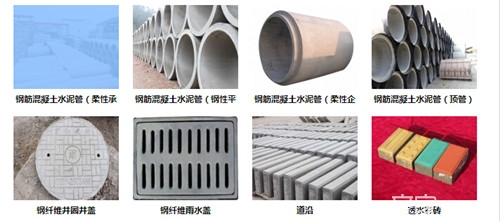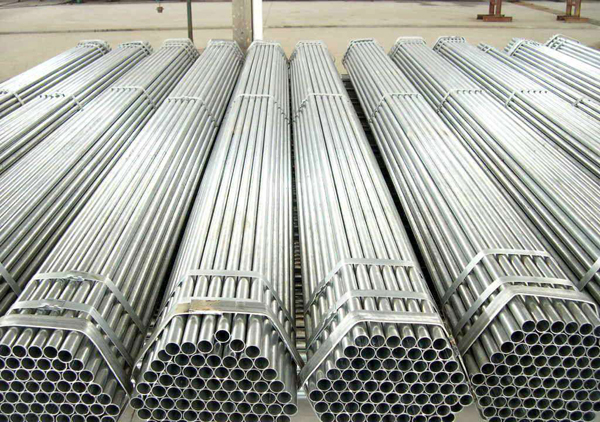Reinforced concrete structure refers to a structure made of reinforced concrete. The main component of the load bearing is constructed of reinforced concrete. Including thin shell structures, large formwork cast-in-place structures, and buildings using reinforced concrete structures built with sliding forms, risers, etc. A structure made of steel and concrete. In the construction industry, reinforced concrete has become a very important building material. Reinforced concrete structures and reinforced concrete density are important issues to consider when using reinforced concrete. Is that reinforced concrete freely configurable? Or, like steel, there is a special acceptance test for reinforced concrete? Let me give you the answer one by one!

The design specification of reinforced concrete structure
1. Introduction of reinforced concrete
Since the second half of the 19th century, reinforced concrete as a structural material has been widely used under the trend of industrial civilization. Because its material properties are superior to other structural materials, it has achieved unprecedented applications and developments in housing construction and civil engineering. Successively in the materials, design methods, production processes and construction techniques also show their talents. Therefore, the architectural structure design gradually becomes the focus and difficulty of the structural engineer. This article discusses the basic requirements and design requirements of the reinforced concrete structure design.
2. The basic requirements for the design of reinforced concrete structures
The purpose of structural design is to ensure that the structure is safe and economical. The specific requirements are as follows:
(1) Security. The structure should be able to withstand the various loads that may occur during normal use and normal construction. In the event of a predetermined accidental load, the main structure must remain stable and strong. For example: direct impact on the structure of the load and temperature changes, support sinking, impact, earthquake hits and other accidental events, when these effects occur, and after the occurrence, the building structure to maintain overall stability.
(2) Applicability. The finger structure has good performance in normal operation. No excessive deformation or excessive cracks affect normal use. The width of the crack cannot exceed the allowable value.
(3) Durability. The finger structure has sufficient durability under normal maintenance and must meet the use time of the structure.
Safety, applicability and durability are collectively referred to as structural reliability and are also called the most basic functional requirements of the structure. In the structural design, we must learn to correctly handle the contradiction between the reliability and economy of the structure, so that the structural design is safe, reliable and economical and reasonable.
3. Cracks in the design of reinforced concrete structures
Some kind of discontinuity in solid materials, which we often call cracks, is common in solid materials. Experiments on concrete also confirmed the presence of microcracking in concrete without load and in reinforced concrete structures, including aggregate cracks, cohesive cracks on aggregate-cement bonded surfaces, cracks in grout, etc. .
The crack control method of reinforced concrete structures is mainly based on the idea of ​​"resistance", and the traditional crack control methods can be analyzed by applying traditional mechanics and fracture mechanics, respectively.
From the point of view of conventional mechanics, due to the pre-stress applied to the concrete beam in advance, the concrete beam is subjected to external loads and all (or part) of the tensile stress are cancelled, so that concrete cracks can be avoided (or delayed), which is equivalent to The tensile properties of the concrete in the beam are improved so as to fully utilize the high-strength material.
From the point of view of fracture mechanics, there are many micro-defects and micro-cracks in the interior of concrete materials, and these micro-defects and micro-cracks will continue to evolve and develop under the action of external loads and eventually form macroscopic cracks. If a pair of axial pressures are pre-applied to both ends of the concrete beam, the stress intensity factor at the end of the crack is considered to be negative. If the stress intensity factor generated by the external load at the crack tip and the stress intensity factor by the non-uniform compressive stress are equal, the stress intensity factor at the crack tip is zero. At this time, the crack will not stably expand. In other words, because the prestressed stress is applied to the concrete beam in advance, the stress intensity factor at the end of the crack under the action of the external load is reduced, thereby avoiding or delaying the cracking of the concrete.

4. Problems of deformation joints in the design of reinforced concrete structures
For the problem of deformation joint spacing in the design of reinforced concrete structures, it is generally difficult to grasp the construction process. The structural design code stipulates that the maximum distance between the expansion joints of reinforced concrete structures is 55m. If post-concrete section construction, special prestressing measures are taken, or measures to reduce the temperature change and shrinkage of concrete are taken, there are sufficient basis At this time, the pitch of deformation joints can be increased appropriately.
Because of the different temperature differences in different regions and the different cracking stress of concrete, the probability of cracking is different. It is required that we must adjust the reinforcement of beam and column in the structural design. For example: Longitudinal plate reinforcement requires two-tiered installations, but also reinforcement of beam and plate reinforcements in the central area. For beams on both sides, it is particularly necessary to strengthen the column reinforcements on the side spans so as to resist the temperature-induced stress. The structure is easily torsion at the corners, so in the design, the corner structure should be strengthened. If it is not possible to effectively analyze the stress conditions, deformation joints must be set up according to the recommended specifications, unless special measures are taken to avoid the installation of expansion joints.
5. Earthquake resistance in the design of reinforced concrete structures
Earthquakes are natural phenomena like wind and rain. They are ground vibrations caused by the Earth's interior. Earthquakes frequently occur in many countries in the world. In recent years, earthquake disasters have occurred frequently in China. Earthquakes in Wenchuan and Qinghai have warned us that the seismic performance of buildings is a factor that must be taken into account when building houses in China. Earthquake resistant structures have also been listed as an important factor to consider in the design of the world's building structures.
The following principles must be observed in the design of reinforced concrete:
(1) The bearing capacity, mass, and stiffness are in the structure, and should be symmetrical, uniform and continuous in the plane and along the height, and the thickness of the stress steel bar must be paid attention to. Therefore, the stress concentration should be avoided.
(2) Set up as many anti-seismic lines as possible. The arrangement of statically indeterminate structures and high ductility energy-consuming components require strengthening for statically determinate structural parts, critical parts, and weak links.
(3) In the structure, the integrity of the connection must be made, and the structural units must be firmly connected. The different structural units must be completely separated.
(4) The bearing capacity and stiffness of the connection between the member and the node must be compatible with the bearing capacity and stiffness of the structure, and the bearing capacity of the joint cannot be lower than the bearing capacity of the member.
(5) Effective measures need to be taken to prevent premature shear failure of concrete and brittle failure such as concrete crushing and anchorage slippage of steel bars.
(6) Do not add steel bar blindly, because the strength or lack of bearing capacity of a certain part of the structural design may cause the structure to be relatively weak. For reinforcing parts of beam ends, column ends, and earthquake-resisting walls, the reinforcing steel bars should be reduced. The premise is that the bending reinforcement must meet the requirements of bearing capacity and seismic structure.
Reinforced concrete density
In general, C10 to C20 grade concrete has a bulk density of between 2360-2400 kg/m3, C25-C35, generally about 2400-2420 kg/m3, and C35-C40 generally between 2420-2440 kg/m3.
Normal density of concrete is about 2200kg/m3. The general design density of reinforced concrete is about 2500kg/m3. Different types of concrete have different aggregates, different cements, different configuration methods, different amounts of steel reinforcement, and different densities.

Reinforced concrete drainage pipe
What is reinforced concrete drainage pipe
1. It is the cement pipe that we often see. There are steel bars inside, so called reinforced concrete pipe, used for drainage, it is called reinforced concrete drainage pipe.
2, some requirements are not very high, the diameter is not large (usually less than about 400mm in diameter), some with bamboo, iron wire or some other strength material to do tight, instead of steel.
Reinforced concrete drainage pipe specifications
According to the difference of the inner diameter of the concrete pipe, it can be divided into small-diameter pipes (with an inner diameter of 400 mm or less), medium-diameter pipes (400-1400 mm), and large-diameter pipes (above 1400 mm). According to the difference in the ability of the pipe to withstand water pressure, it can be divided into low pressure pipe and pressure pipe. The working pressure of the pressure pipe is generally 0.4, 0.6, 0.8, 1.0, 1.2 MPa and so on. Concrete pipe and Steel Pipe, according to the different types of pipe joints, can be divided into flat-type pipe, socket-type pipe and enterprise-type pipe. The interface forms of cement mortar wiper interface, steel wire mesh cement mortar wiper interface, cement mortar socket and rubber ring socket and so on.
Editor's summary: The quality of the design of reinforced concrete structures relates to the final quality of the entire project and relates to the safety of the people's property. Therefore, it is of great responsibility for structural designers. Therefore, in the design of reinforced concrete structures, it is necessary to make scientific and appropriate designs in accordance with relevant systems and regulations, and according to actual projects, in order to improve the quality of buildings and benefit the people.
Construction installation decoration construction knowledge construction
Galvanized Steel Pipe divided into cold galvanized steel pipe, hot dip galvanized steel pipe.Galvanized steel pipe surface has hot-dip galvanized layer or electric galvanized layer.Hot galvanized pipe is molten metal and the iron matrix reacting alloy layer, so that the substrate and coating combination of both. Hot-dip galvanizing is the first steel pickling, in order to remove the steel surface of the iron oxide, after pickling, a mixed aqueous solution tank cleaning by aqueous ammonium chloride or zinc chloride or ammonium chloride and zinc chloride, and then into hot-dip plating bath. HDG has a uniform coating, strong adhesion, long life and other advantages.
Product:Galvanized Steel Pipe
Size:DN10-DN700
Materials: A53-B,A106-B,API5L-B,A106-C,A333-3,A312,ST37/35/52,X42,X52,X60...
Thickness: 2mm-50mm.
Standard:ASTM,JIS,DIN,GOST.......
Crafts: Hot-Rolled, Cold Drawn, Thermal Expansion, ERW, LSAW...
Connection: Welding,Threaded.
Package: Paint, Anti-rust oil, Canvas Packaging, According to customer requirements.
Brand Name: HY
Place of Origin: China (Mainland)
Certification: API 5L.ISO.UKS.SGS.BV
Application: Chemical, Water, Oil and gas, Electricity

Galvanized Steel Pipe
Galvanized Steel Pipe,Galvanized Welded Steel Pipe,Steel Pipe With Galvanized,Black Powder Coated Galvanized Steel Pipe
CANGZHOU HAOYUAN PIPE FITTINGS MFG CO.,LTD , https://www.pipefitting-china.com
